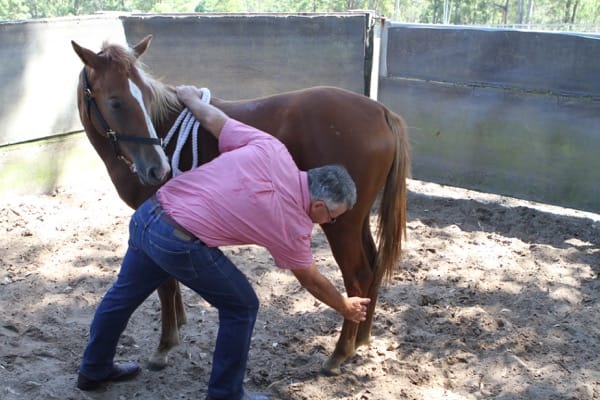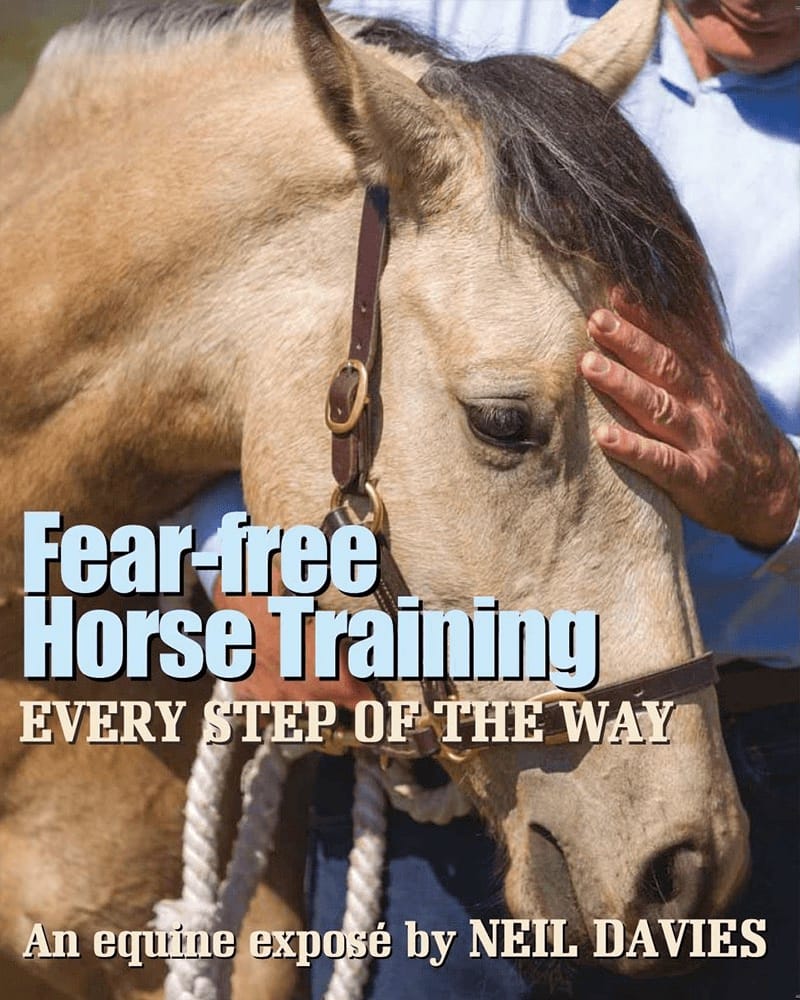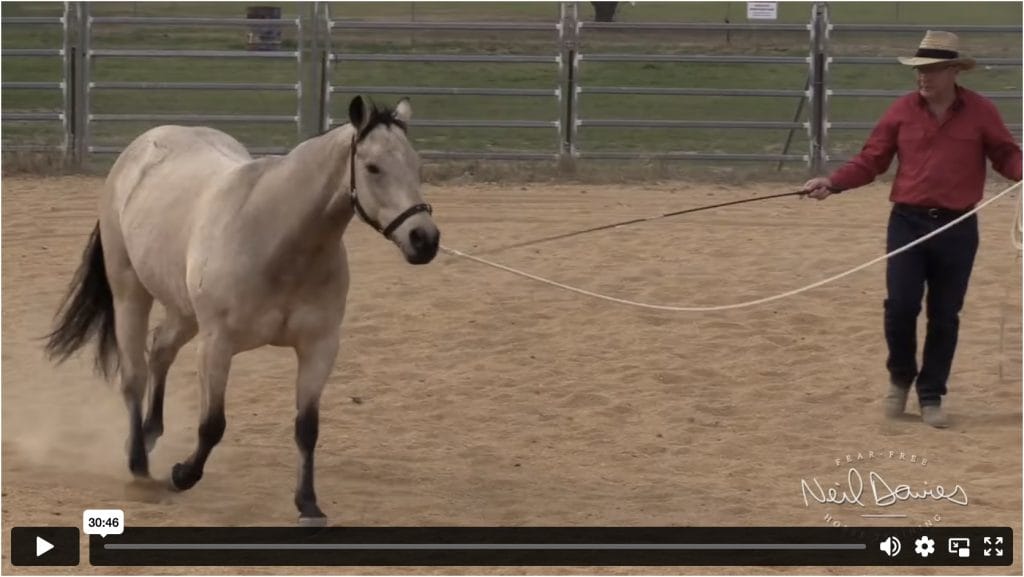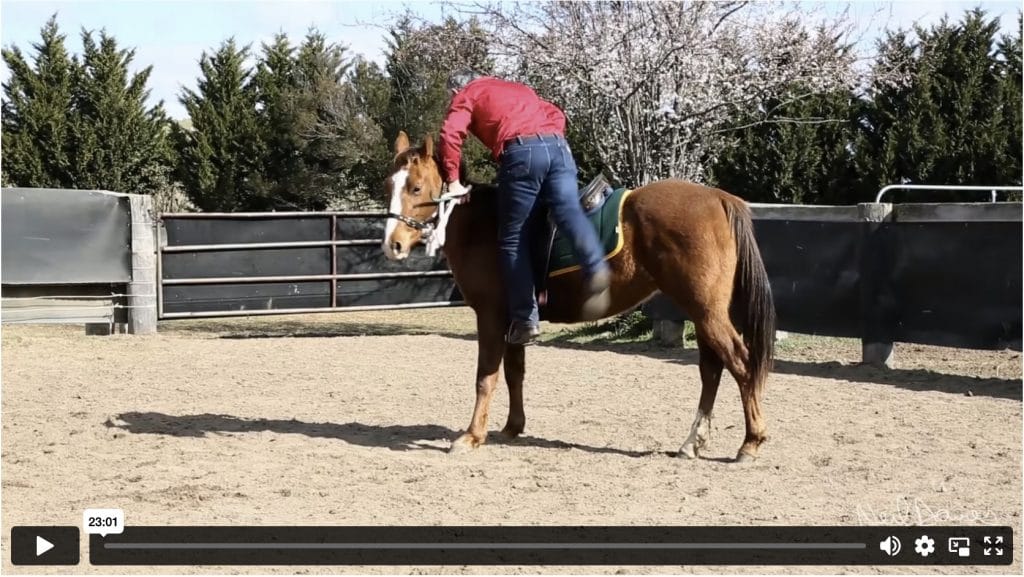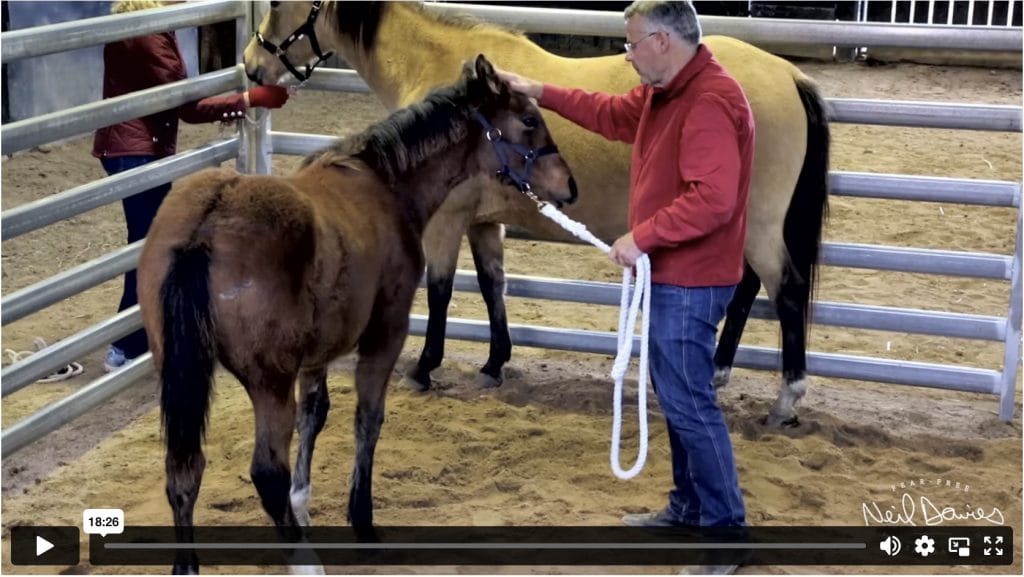Lots of trainers tie a plastic bag or a flag on the end of a stick and call it a ‘training tool’.
When the stick is used, the plastic bag/flag makes a whooshing noise that frightens horses every time it’s waved near them.
If a horse is already worried or frightened when you approach, you certainly don’t need anything else to frighten him.
And if a horse has never been saddled, flapping a plastic bag or flag on a stick won’t help the horse to accept the saddle.
Some trainers justify using a flag or a long stick to stroke a frightened horse, by saying that the horse is too dangerous to approach and might bite or strike or kick them.
Others say that using a flag or an artificial hand to handle a horse’s legs, is safer than using your own hand.
Here’s the thing.
Handling frightened horses and starting horses under saddle can be dangerous if you don’t know what you’re doing and you don’t have the relevant skills.
If you feel frightened of being bitten or kicked or bucked off, you shouldn’t be handling a frightened horse.
If you think you need a flag or a long stick or an artificial hand to stroke a horse or handle his legs, you shouldn’t be handling the horse.
A frightened horse only bites and strikes and kicks as a last means of defence when he can see no alternative.
It’s not fair to such a horse to use frightening artificial ‘tools’ to make up for your lack of skill and experience.
You need to develop your skills by handling easier horses and gradually build up to handling the more difficult horses.
A frightened horse doesn’t want you anywhere near him, so he’ll be very worried when you approach.
He’s already frightened, so you certainly don’t need a plastic bag making a frightening whooshing noise extending from your arm.
Instead of waving anything or flapping anything at a frightened horse, the first thing you must do is simply go to him and show him you’re not going to hurt him.
This is the start of overcoming the horse’s fear of humans.
Flapping things at him won’t help to achieve this.
Neither will stroking him with a long stick.
Some trainers ride another horse and use a flag on a stick to chase a frightened young horse in a round yard.
The trainer feels safe and secure sitting on the other horse, while the young horse runs in fear.
This will never help any horse to overcome his fear of humans and it won’t teach him to move forward when a rider is on his back.
Chasing a horse from the ground or from another horse will merely teach him to run in fear.
When a young horse is first ridden, the rider must teach the horse to be relaxed and confident and to respond to his signals.
Every horse must be taught to move forward one step at a time.
Whenever we work with any horse, we should always try to use the least amount of pressure to achieve our desired response.
Always start with the lightest touch and the least amount of pressure.
There’s never any need for a ‘tool’ that flaps around and makes a frightening whooshing noise.
There’s never a need to apply that much pressure to any horse.
It’s way too much pressure and many horses can’t cope.

